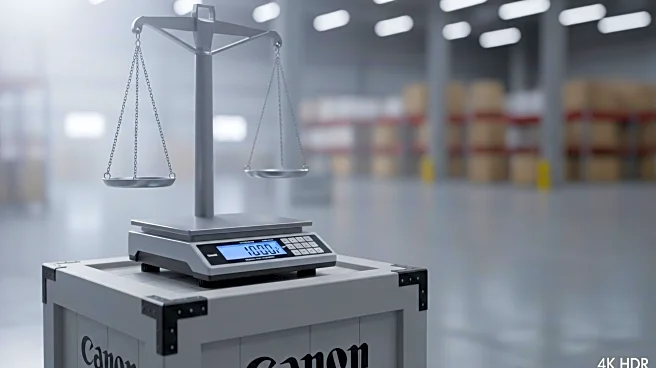What is the story about?
What's Happening?
U.S. manufacturing has contracted for the sixth consecutive month, as reported by the Institute for Supply Management (ISM). The contraction is largely attributed to the import tariffs imposed by the Trump administration, which have raised the nation's average tariff rate to its highest in a century. These tariffs have created significant challenges for manufacturers, with some describing the current business environment as worse than the Great Recession. The ISM's manufacturing PMI slightly increased to 48.7 in August from 48.0 in July, but it remains below the 50 mark, indicating ongoing contraction. The tariffs have particularly impacted industries such as computer and electronic products, where higher material costs are complicating efforts to bring production back to the U.S. Additionally, spending on factory construction has decreased, further highlighting the economic strain.
Why It's Important?
The ongoing contraction in U.S. manufacturing underscores the broader economic impact of the Trump administration's tariff policies. These tariffs have not only increased costs for manufacturers but have also created uncertainty that affects planning and investment decisions. The manufacturing sector, which accounts for a significant portion of the U.S. economy, is experiencing reduced hiring and investment, with many companies adopting a wait-and-see approach. The tariffs have also led to higher prices for goods, which could eventually be passed on to consumers, potentially affecting inflation rates. The situation highlights the delicate balance between protectionist trade policies and their unintended consequences on domestic industries.
What's Next?
The recent ruling by a U.S. appeals court declaring many of President Trump's tariffs illegal adds another layer of uncertainty for businesses. This decision may prompt further legal challenges and could lead to changes in tariff policies if upheld by higher courts. In the meantime, manufacturers are likely to continue facing challenges related to tariff-induced costs and planning difficulties. The potential for increased AI investment and tax incentives starting in 2026 may offer some relief, but the immediate outlook remains cautious as companies navigate the current economic landscape.
Beyond the Headlines
The tariff situation raises important questions about the long-term viability of protectionist trade policies and their impact on global supply chains. As manufacturers grapple with higher costs and planning uncertainties, there may be a shift towards more localized production or alternative sourcing strategies. Additionally, the legal challenges to the tariffs could set precedents for future trade policy decisions, influencing how the U.S. engages with its trading partners.
AI Generated Content
Do you find this article useful?














